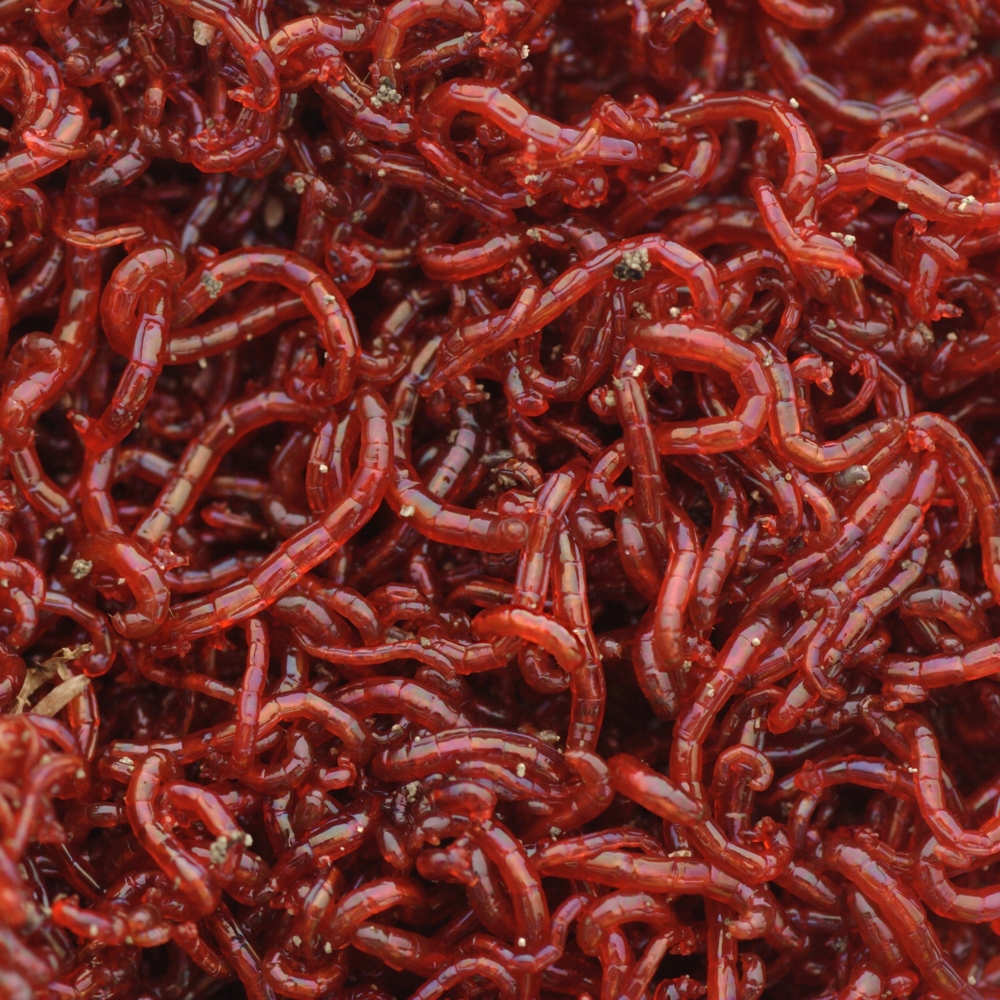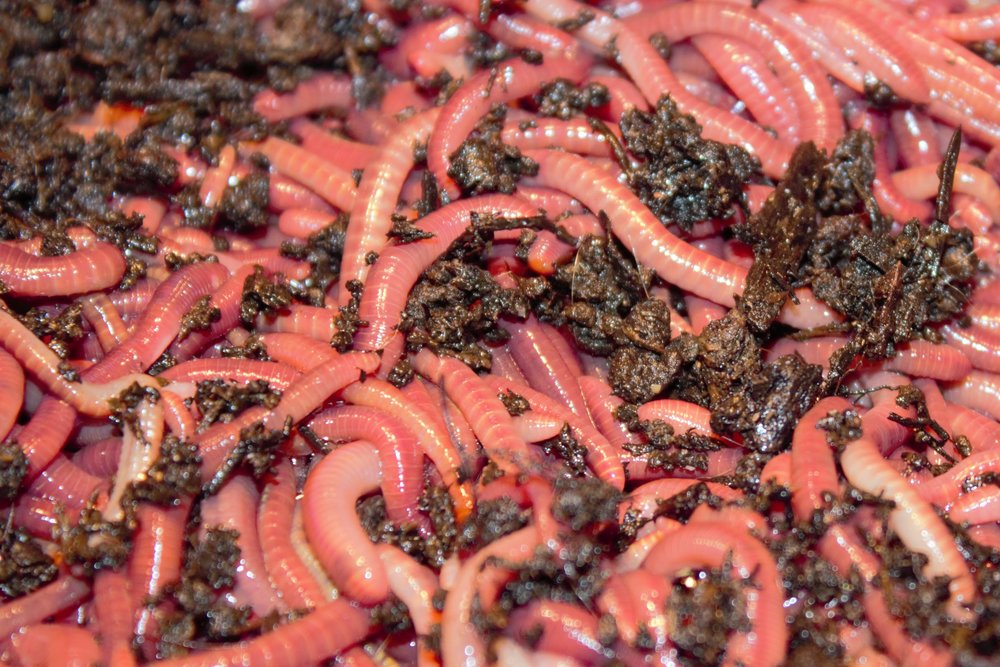Healthy red worms: How to start composting
Healthy red worms: How to start composting
Blog Article
The Function of Red Wigglers in Lasting Horticulture
The combination of red wigglers into lasting gardening methods provides an engaging approach to enhancing dirt health and wellness and decreasing organic waste. The effects of utilizing red wigglers extend beyond mere composting; their duty in forming a more lasting future warrants a much deeper exploration of their advantages and useful applications.
Recognizing Red Wigglers
Red wigglers, clinically understood as Eisenia fetida, are a species of earthworm renowned for their role in lasting gardening and composting methods - red wigglers. These worms flourish in disintegrating raw material, making them especially reliable in transforming cooking area scraps and yard waste into nutrient-rich garden compost. Unlike traditional earthworms, red wigglers have a greater tolerance for varying wetness levels and can flourish in environments with abundant natural material
(red wiggler worms for sale)Characteristically, red wigglers are smaller sized than their earthworm counterparts, usually determining between 3 to 4 inches in length. They possess a reddish-brown coloration and have a fractional body framework that assists in their burrowing and feeding tasks. These organisms are hermaphroditic, meaning each specific has both male and women reproductive organs, which permits for effective population development under optimal conditions.
The habitat preferences of red wigglers consist of wet, dark environments rich in organic web content, such as garden compost containers or worm ranches. Their eco-friendly role extends beyond composting; they are essential in aerating the dirt and helping with nutrition biking, which eventually adds to healthier garden ecosystems. red wigglers. Understanding the biology and behavior of red wigglers is necessary for those looking for to execute reliable vermicomposting in sustainable horticulture
Advantages of Vermicomposting
Vermicomposting offers many benefits that enhance sustainable gardening methods and add to ecological health and wellness. Among the main benefits is the improvement of natural waste into nutrient-rich garden compost, which enhances soil structure and fertility. The castings generated by red wigglers are packed with beneficial microorganisms and vital nutrients, making them an outstanding all-natural plant food.
In addition, vermicomposting dramatically minimizes garbage dump waste. By diverting cooking area scraps and backyard waste from land fills, this method not only lessens methane discharges-- a potent greenhouse gas-- yet likewise advertises a round economy, where waste is repurposed as a resource.
Another advantage is the improvement of dirt oygenation and water drainage (red wigglers). The burrowing activity of red wigglers creates networks in the dirt, permitting air and water to pass through more easily, hence fostering a healthier origin system for plants
Additionally, vermicomposting can be done on a little scale, making it easily accessible for metropolitan garden enthusiasts and those with limited room. This method encourages ecological stewardship and recognition, as people come to be a lot more involved with their waste monitoring techniques. Inevitably, vermicomposting stands for a lasting, reliable, and green method to horticulture that profits both plants and the earth.
How to Beginning Vermicomposting
Starting your very own vermicomposting system can be a fulfilling undertaking that improves your lasting gardening methods. To begin, pick an appropriate container, such as a plastic container or wood box, with good drainage and air flow. The size will depend on the volume of cooking area scraps you produce; a bin of 10-14 gallons usually is adequate for a house.
Next, prepare the bed linen material. Shredded newspaper, cardboard, and coconut coir are excellent choices, offering a comfortable environment for the red wigglers. Go for a bedding deepness of concerning 4-6 inches, which must be wet yet not soggy.
As soon as the bedding is established, introduce your worms. Red wigglers (Eisenia fetida) are the most ideal for composting. Beginning with roughly one extra pound of worms for every single 2-3 extra pounds of kitchen scraps weekly.
Begin adding kitchen waste, staying clear of meat, dairy products, and oily foods, as these can draw in insects and create odors. Routinely keep an eye on the container's wetness levels and temperature, ensuring it continues to be within the suitable range for worm activity. With these preliminary steps, you'll be well on your method to developing nutrient-rich compost for your yard.
Keeping a Healthy And Balanced Worm Container
A growing worm container calls for regular treatment and attention to preserve an ideal environment for the red wigglers. Key variables to check include moisture levels, temperature, and food supply. Maintaining a dampness degree similar to a wrung-out sponge is vital; way too much water can cause anaerobic conditions, while as well little can dehydrate the worms.
Temperature is also essential, as red wigglers flourish in a variety of 55 to 77 levels Fahrenheit. Extreme temperature levels can worry the worms, possibly leading to death. Placing the container in a climate-controlled location or using shielding materials can help regulate temperature level fluctuations.

Lastly, oygenation is essential. On a regular basis turning the bedding and making use of a fork or shovel can protect against compaction and advertise airflow, making sure a healthy, flourishing environment for the red wigglers. By sticking to these techniques, gardeners can preserve an efficient worm container that sustains lasting horticulture efforts.
Influence On Dirt Health And Wellness
Enhancing dirt health via making use of red wigglers is a basic facet of lasting gardening. These worms, recognized medically as Eisenia fetida, play an important function in improving soil framework and fertility. By taking in natural matter, red wigglers break down intricate products right into simpler substances, a process called vermicomposting. Completion item, worm spreadings, is rich in necessary nutrients, including nitrogen, phosphorus, and potassium, which are essential for plant growth.

(Lake Hickory Worms,)Research studies have actually revealed that dirts improved with worm spreadings show increased microbial task and improved fertility, leading to higher crop yields. By including red wigglers right into horticulture practices, gardeners not only improve their dirt yet also add to an extra lasting agricultural system, emphasizing the interconnectedness of dirt health and environmental stewardship.

Conclusion
To conclude, red wigglers substantially add to lasting horticulture via their imp source reliable vermicomposting practices. Their capability to transform natural waste into nutrient-rich garden compost improves soil fertility and supports a diverse microbial community. Furthermore, their burrowing task enhances dirt oygenation and water retention, profiting plant health. By promoting waste reduction and fostering a round economy, red wigglers emerge as vital elements in eco-friendly horticulture efforts, emphasizing their vital role in ecological sustainability.
Report this page